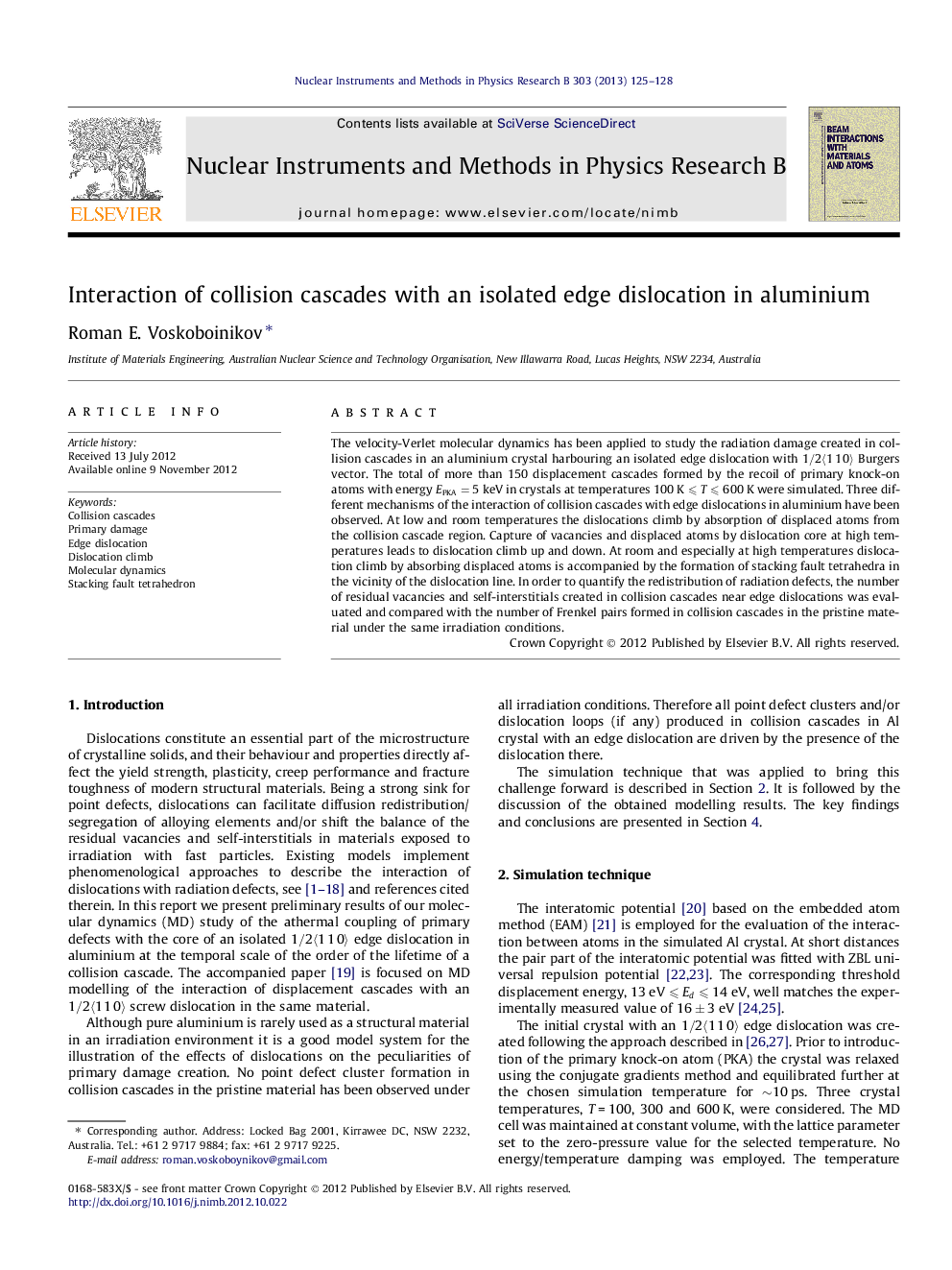| Article ID | Journal | Published Year | Pages | File Type |
|---|---|---|---|---|
| 8042871 | Nuclear Instruments and Methods in Physics Research Section B: Beam Interactions with Materials and Atoms | 2013 | 4 Pages |
Abstract
The velocity-Verlet molecular dynamics has been applied to study the radiation damage created in collision cascades in an aluminium crystal harbouring an isolated edge dislocation with 1/2ã110ã Burgers vector. The total of more than 150 displacement cascades formed by the recoil of primary knock-on atoms with energy EPKA=5keV in crystals at temperatures 100K⩽T⩽600K were simulated. Three different mechanisms of the interaction of collision cascades with edge dislocations in aluminium have been observed. At low and room temperatures the dislocations climb by absorption of displaced atoms from the collision cascade region. Capture of vacancies and displaced atoms by dislocation core at high temperatures leads to dislocation climb up and down. At room and especially at high temperatures dislocation climb by absorbing displaced atoms is accompanied by the formation of stacking fault tetrahedra in the vicinity of the dislocation line. In order to quantify the redistribution of radiation defects, the number of residual vacancies and self-interstitials created in collision cascades near edge dislocations was evaluated and compared with the number of Frenkel pairs formed in collision cascades in the pristine material under the same irradiation conditions.
Keywords
Related Topics
Physical Sciences and Engineering
Materials Science
Surfaces, Coatings and Films
Authors
Roman E. Voskoboinikov,
